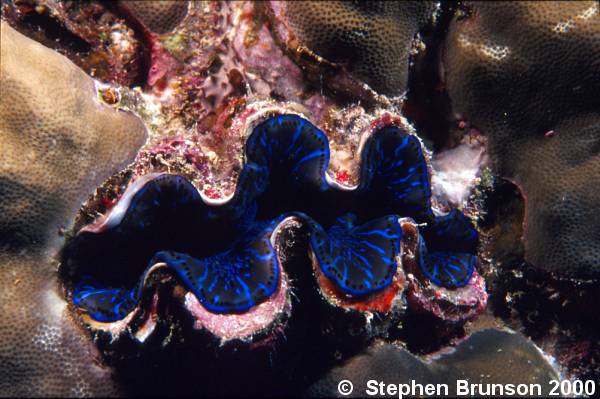








Crustacean: Giant Clam
Crustacean is the common name for mainly aquatic arthropod animals with jaws and two
pairs of antennae, such as the crab, lobster, and shrimp, that constitue the class
Crustacea. They are among the most successful animals, dominating the sea much as
insects dominate the land. The majority of individual animals in the world are
marine crustaceans of the order Copepoda. Crustaceans are also successful in fresh
water; a few, such as wood lice, are also abundant in moist land environments.
Although most crustaceans are small, they have a wide range of body form and habits,
and the class includes larger invertebrates such as lobsters up to 2 feet long and a
spider crab with a leg span of 12 ft. The class contains about 26,000 known species.
Like all arthropods, crustaceans have an external skeleton (exoskeleton) and a body
made up of a series of segments; each of these generallly bears a pair of two-branched
limbs. In the course of evolution the segments and other parts of the body have
become specialized. The limbs, used in respiration, swimming, crawling, and feeding,
may be highly modified as jaws, reproductive organs, and other structures, or may be
simplified or lost.

Print Number - CN006
Limited Edition signed color photography for sale by Stephen Brunson
In scientific classification, the terms shrimp, lobster, and crayfish do not refer to
definite decapod groups. In popular terminology, shrimp is a term applied indiscriminately
to small crustaceans, wheareas lobsters are thought of as large ones, and cray fishes are
freshwater animals. Because the zoological classification has little to do with the size
or habitat, common names are hard to reconcile with scientific ones. The spiny lobsters,
which do not have large crushing claws, are placed in the section Palinura. The
lobsters in the narrow sense (Homarus and Nephrops) are placed in the section
Astacura, together with the crayfishes and mud shrimp.
Crustaceans are modified for a wide variety of habitats and ways of life; their success
may be partly accounted for by their being "advanced" organisms. They are important in
the the food chain, partly because so many of them eat small plants and animals. Many of
them strain small particles of food from the water, but the larger crustaceans such as
lobster, shrimp, and crabs are often omnivores, scavengers, or predators. Several species
are also parasites. Crustaceans, in turn, are eaten by many animals, including humans,
and are rich in protein, such as lobster tails.
Reproduction is primarily sexual in crustaceans; the only kind of asexual reproduction is
parthenogenesis, (development from unfertilized eggs), but this is rare. Usually the
sexes are separate; some parasites and most barnacles, however, which have difficulty
obtaining mates, are simultaneous hermaphrodites (that is, male and female at the same
time). This increases the number of possible partners and may allow self-fertilization as
a last resort. A number of crustaceans also switch sex as they get older. Many
crustaceans exhibit elaborate courtship behaviours, and the males may fight for the chance
to mate.
BrunsonImages@att.net


















